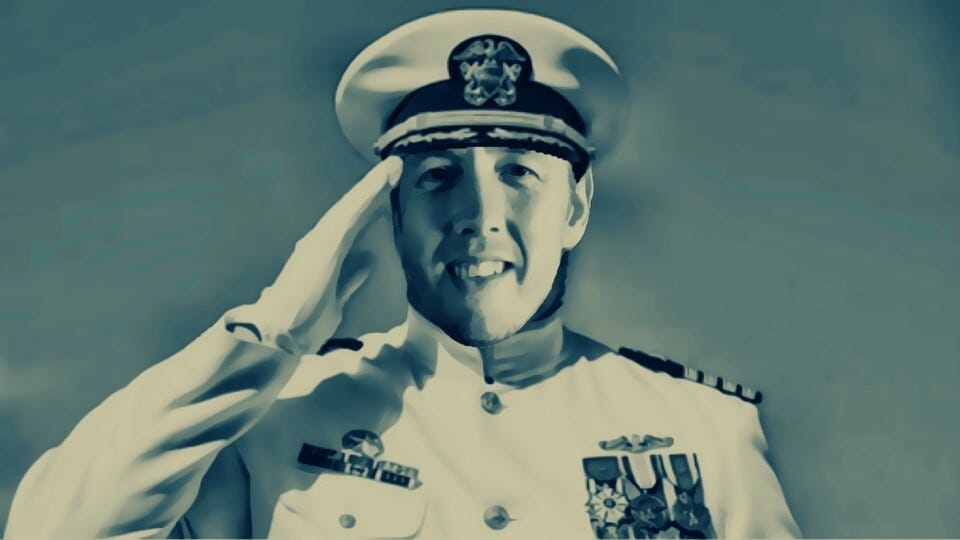Jim Brunner, columnist for The Seattle Times, has promoted me three grades to Captain, and switched my branch of services to the United States Navy.
While most have known me as “Captain K” since 2021, I realize my exit from service prevents me from attaining higher rank, like Major. As such, I am considerably honored that I would not only be promoted one grade, but three. Had I stayed in the service instead of exiting in 2014, I would be a Major right now, perhaps about to pin on the insignia of a Lieutenant Colonel if selected for early promotion.
I am apparently not the only person who thought Jim’s article was hot trash, because it can no longer be found on The Seattle Times’s website, or in any affiliated journals. The article, dubbed “How 2020 Election Conspiracies Continue to Fester in WA GOP and Grassroots Conservative Groups,” was written in response to my appearance with Patriots United, Glen Morgan, and Dr. Douglas Frank in Vancouver, Washington, on September 8. It was filled with mistakes, hasty assumptions, half-truths, contempt, and bias.
Have no fear, I have captured the text that inspired this article:
Brunner is correct that I was a Captain in the military. He fails to specify which branch of service, which clearly emphasizes that he is unaware that the different branches have different titles assigned to their pay grades. Titles for enlisted grades vary widely by service. The Army, Marine Corps, Air Force, and Space Force have the same titles for officers, whereas the Navy and Coast Guard share the same titles for them. Officers in Grades O-7 to O-10 are “Generals” in the former group of branches, and “Admirals” in the latter. They are collectively known as “flag officers.”
Officers from Grades O-1 to O-6 in the Army, Marine Corps, Air Force, and Space Force are called:
O-1: Second Lieutenant
O-2: First Lieutenant
O-3: Captain (my rank)
O-4: Major
O-5: Lieutenant Colonel
O-6: Colonel
Officers from Grades O-1 to O-6 in the Navy and Coast Guard are called:
O-1: Ensign
O-2: Lieutenant Junior Grade
O-3: Lieutenant
O-4: Lieutenant Commander
O-5: Commander
O-6: Captain (my honorary rank from The Seattle Times)
Army captains are usually young, generally between 25 and 35 years old, and usually hold that rank for a period of seven years. They serve in staff positions or command companies, which range in size from 50 to 200 men, depending on function.
Navy captains have generally been in the service at least 20 years, and may command a major ship, or serve in very senior command or staff positions elsewhere in the Navy. Their Army counterparts, colonels, command brigades, which have several thousand soldiers in them.
This is not simply an oversight, as when journalists refer to me as “retired,” when in reality I am not pensioned and am simply a “former” Army captain, a common rank for officers and one that is not typically denoted for a retiree. The difference in years of service, level of responsibility, seniority, and public perception is stark.
Jim Brunner has proven, by being incapable of doing the simplest research like clearing up titles and descriptors, that the mainstream media cannot be trusted when determining who should be called conspiracy theorists, lie peddlers, and seditionists. Sadly, The Seattle Times apparently has such a short supply of military veterans that no one could identify, at the top of an article, that his details were horribly errant.
Oh, and Jim. I’m a human redwood. Not lanky.






Human redwood....love it!
Thank you Captain Keshel! The good news is that the trash(ed) article allowed me to learn more of the military hierarchy which I've never quite understood. You have a way of getting to the basics quickly.